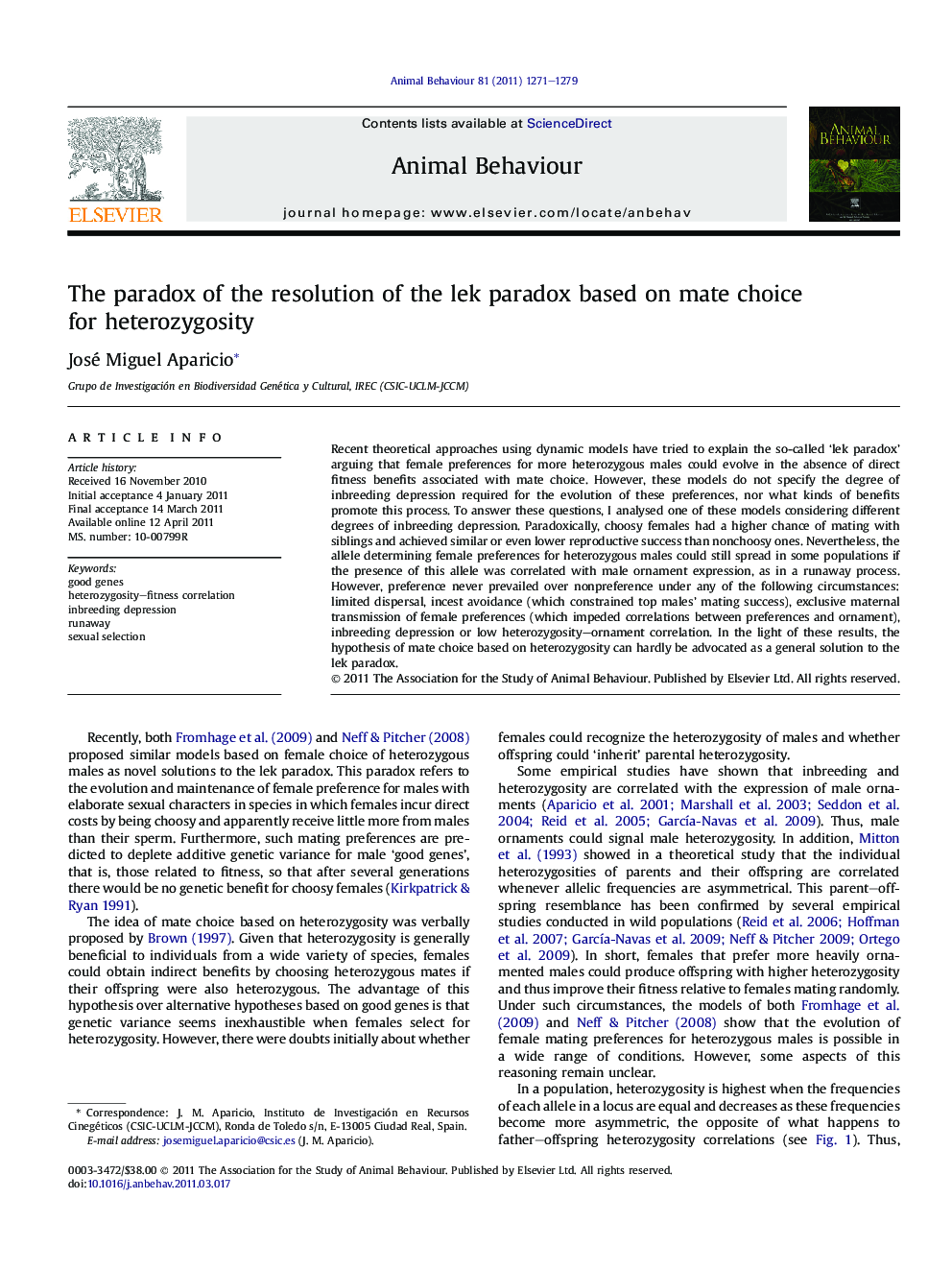| Article ID | Journal | Published Year | Pages | File Type |
|---|---|---|---|---|
| 2416764 | Animal Behaviour | 2011 | 9 Pages |
Recent theoretical approaches using dynamic models have tried to explain the so-called ‘lek paradox’ arguing that female preferences for more heterozygous males could evolve in the absence of direct fitness benefits associated with mate choice. However, these models do not specify the degree of inbreeding depression required for the evolution of these preferences, nor what kinds of benefits promote this process. To answer these questions, I analysed one of these models considering different degrees of inbreeding depression. Paradoxically, choosy females had a higher chance of mating with siblings and achieved similar or even lower reproductive success than nonchoosy ones. Nevertheless, the allele determining female preferences for heterozygous males could still spread in some populations if the presence of this allele was correlated with male ornament expression, as in a runaway process. However, preference never prevailed over nonpreference under any of the following circumstances: limited dispersal, incest avoidance (which constrained top males’ mating success), exclusive maternal transmission of female preferences (which impeded correlations between preferences and ornament), inbreeding depression or low heterozygosity–ornament correlation. In the light of these results, the hypothesis of mate choice based on heterozygosity can hardly be advocated as a general solution to the lek paradox.
